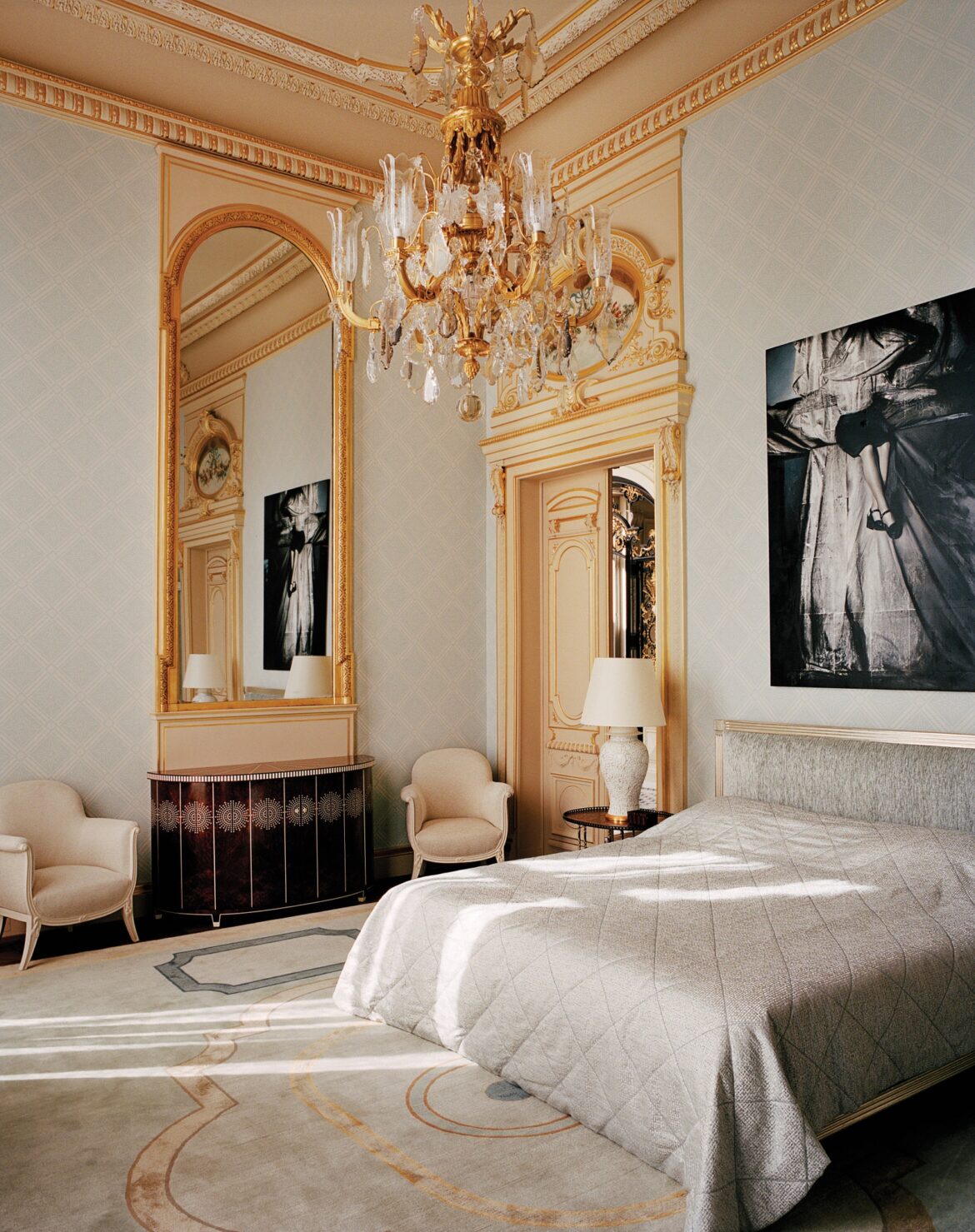Stepping inside an 1870s hôtel particulier in Paris, where tall windows overlook the river Seine and the Musée du Louvre, is to be transported back in time, to the Third Republic that followed the fall of Napoléon III, back when courtesans set the fashion and balls were the rule rather than the exception. Walls, ceilings, beams, doors, and floors pullulate with patterns and motifs: painted, gilded, dripping with trompe l’oeil pearls, swirling vegetation, swags of faux fabric, and great lashings of wedding-cake plasterwork. Mythological narratives are recounted in polychromatic terms, with Hercules attending to his labors across one ceiling as lissome Muses, from Erato to Urania, strike attitudes on walls. In the gallery, a Joe Bradley painting surmounts a Campana Brothers sofa; Ernst Kühn chairs. François Halard A bird chair by François-Xavier Lalanne stands by the front door. François Halard “He wanted a palace, not a house,” AD100 interior decorator Jacques Grange says of the Russian businessman who is the mansion’s present owner, a connoisseur of contemporary art who also “respects a range of artistic achievement.” Even when one of those achievements turns out to be an entire building that is protected by federal legislation. “The City of Paris won’t allow you to touch a thing,” Grange explains of the multi-story house, on which he worked in collaboration with architect Jean-François Bodin. (It will be featured in the designer’s forthcoming monograph, to be published by Rizzoli in September.) Built between 1870 and 1872, by and for a rich engineer, it was later home to Victor Laloux, the architect of the opulent train station that is now the Musée d’Orsay. Until recently, it was pressed into service as corporate offices. Still, Grange continues, “You cannot change it; you can only restore it.” That being said, an official who turned out
to be a fan of his work granted him permission to replace the skylit gallery’s “boring stone floor” with an expanse of black and white marble inlaid in the manner of Byzantine mosaics. Powerfully graphic, its outsize diamond pattern perfectly complements the gallery’s mirror-paneled Renaissance Revival envelope—as does the unexpected injection of modernity through a plump Campana brothers sofa with a spiky golden frame, voluptuous armchairs by Ernst Kühn, and the splashy 2011 canvas by American artist Joe Bradley that’s mounted behind them. A new inlaid marble floor was inspired by Byzantine mosaics. François Halard To bring the soaring rooms back to their original appearance, Grange called on Atelier Mériguet-Carrère, a third-generation Paris studio of decorative painters that is known for working with legendary French designers such as Emilio Terry and Georges Geffroy, as well as helping to restore the Palais Garnier. “All the decors on the walls were in very bad condition when I arrived, all the surfaces,” says the designer, a talent with a contemporary outlook who nonetheless is no stranger to revitalizing the glories of the past or incorporating them into his rooms: One of the designer’s recent restoration projects is the couture salons at 31 […]
Click here to view original web page at www.architecturaldigest.com





